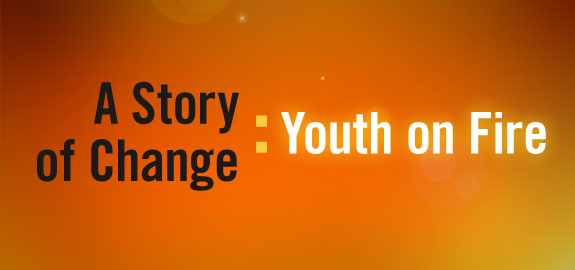Often, it can be difficult for agencies working toward becoming more culturally competent for their LGBTQI2-S youth consumers to believe that organizational change is possible. HRC highlights one story of change from “Learning from the Field: A Listening Tour of Programs Serving LGBTQI2-S Youth Experiencing Homelessness.”
This page is part of resource package created to help programs better serve youth who are LGBTQI2-S and homeless. It was derived from the results of a Listening Tour of programs serving this population. Visit the Listening Tour Page for more information, or read the draft report: Learning from the Field: Programs Serving LGBTQI2-S Youth Experiencing Homelessness.
Staff at Youth on Fire (YOF), a youth Drop-In Center in Cambridge, MA, always thought they offered a welcoming and accepting environment. However, they knew there was always room for improvement. Staff sought to understand how their drop-in center was perceived by youth experiencing homelessness and conducted a needs assessment of homeless youth in the Boston area. They were not entirely surprised to find that GLBT youth on the street did not view YOF as an accepting environment. Current GLBT members also felt that they could not find information or services to meet their needs at Youth on Fire, and even cited hostility from some of the staff.
YOF immediately responded by applying for and receiving funding from the Department of Public Health to increase the center’s capacity to serve GLBTQ youth. This included hiring an openly gay Safe Spaces Coordinator, who conducted a needs assessment of all members. They learned that 40% of their members identified as GLBT, but there were few services directed towards them. Staff ensured that service or facility changes requested during these assessments were implemented whenever possible. They knew any overhaul implemented from the top down would have felt meaningless to the youth, but consumer-initiated strategies would be positively received.
As a result of the focus groups, YOF made simple changes to meet the needs of their members. First, they addressed the physical space. They painted a pale blue over the bright yellow walls, created more private social spaces, and brought in GLBT friendly magazines, books, and movies. They also made sure all staff knew about GLBT advocacy and support resources in the city, and fostered relationships with those groups. Staff activities such as role-playing in staff meetings helped to bring inappropriate and discriminatory staff behaviors to light.
It took three years, but staff are confident that YOF now better meets the needs of the community’s GLBT youth. It has become a preferred space for many GLBT youth experiencing homelessness. Some GLBT youth resisted specialized attention, fearing it would tokenize their experiences and unintentionally “out” them on the streets. However, staff can tell that culturally competent care makes a difference. GLBT services are now fully integrated with day-to-day drop-in center activities.
Youth on Fire’s story highlights how simple, thoughtful changes can improve services for youth who are most at risk. Their story is powerful because it is replicable. Any agency serving youth can start to make their space safe simply by asking youth about their preferences and responding to their needs.

